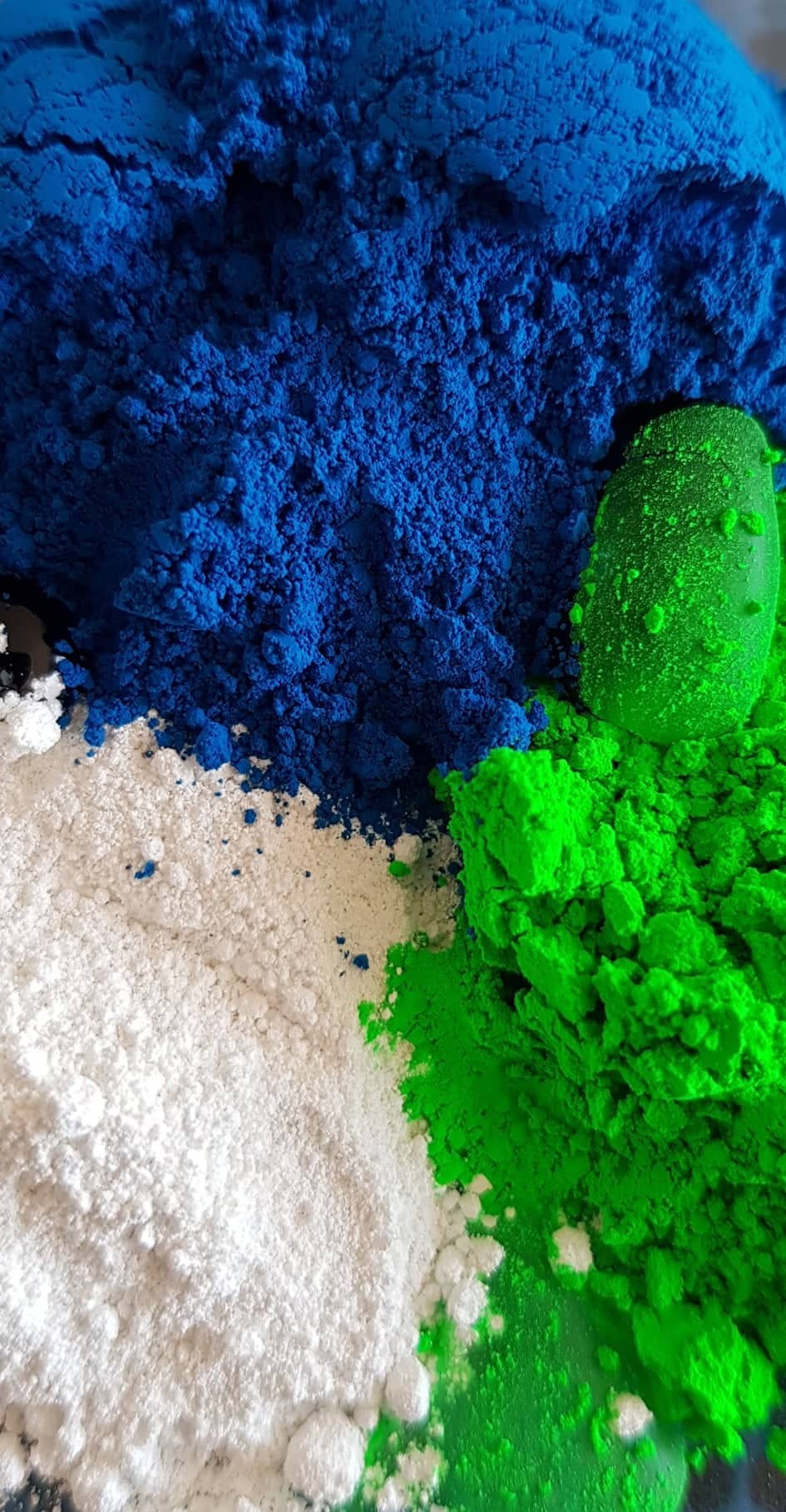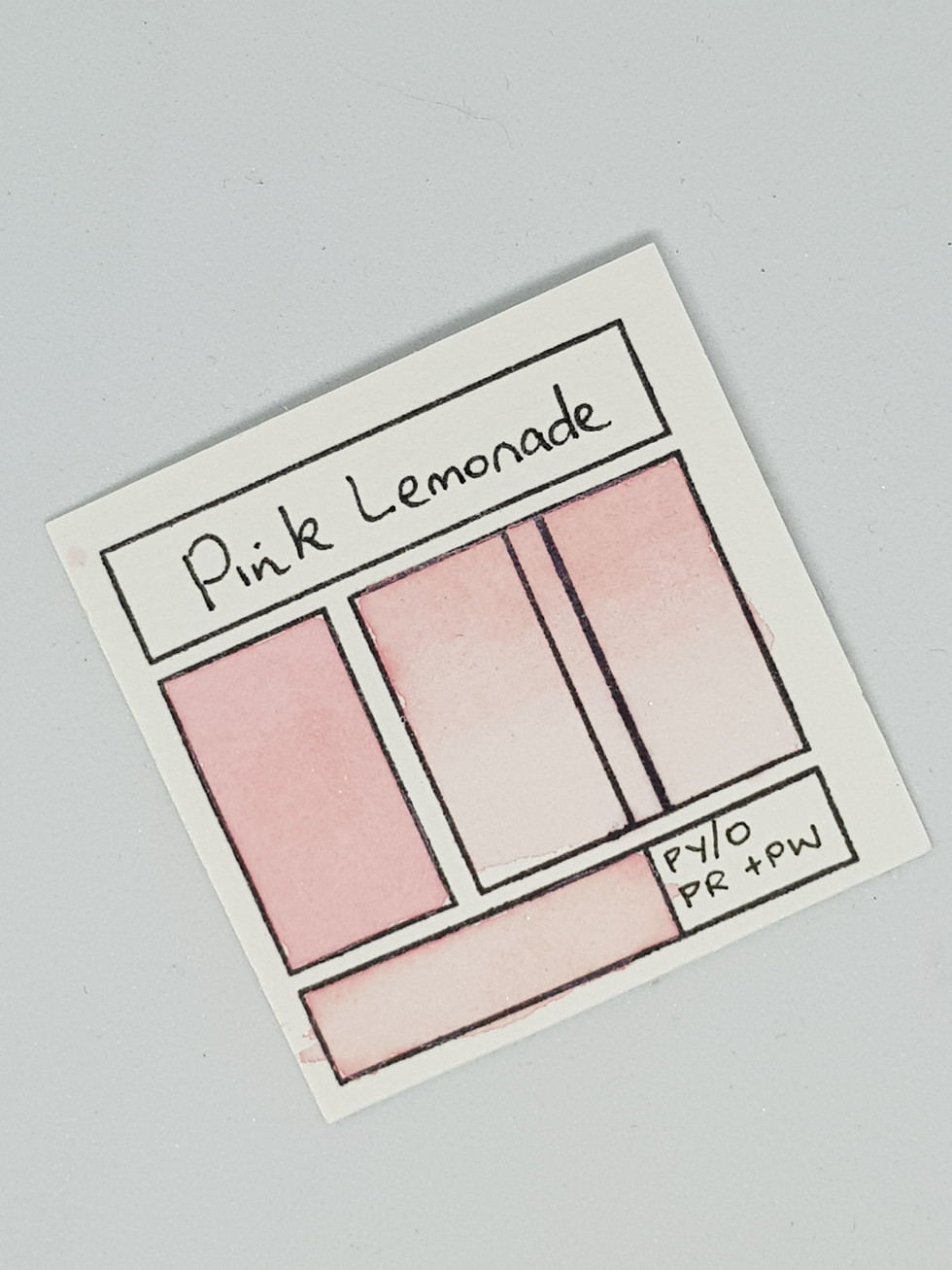Friendly and not so friendly pigments!
Right! This post has been a long time coming. I have had oh so many conversations that ended up with me saying, "Oh, I really should write about that!" and just didn't get around to it because such and such came up SO....here goes!
Please note, these are my recommendations. If you are an experienced maker reading this, you may agree or feel differently. But, as this is my blog, I will share my experiences and recommendations based on when I was a beginner watercolor maker. I actually still consider myself a beginner with some pigments and some not.
Your experiences may differ depending on these factors :
Your environment - humid, cold, dry etc.
Said pigments - pigments that are from a different supplier - there are many!
Binder recipe - with/without honey or clove (other) oil. A different ratio of water/gum arabic and extra glycerin.
Special Note: Comments like, "oh, I never had a problem with that pigment!" are not helpful to a beginner to hear so please refrain from unhelpful comments like this on this blog post only. It is great that you had no issues but these comments unless in a reciprocal conversation or in the forum can make someone question their ability to persevere with said pigment. I have had personal conversations many a time with makers about difficult pigments and it's fine if it's a reciprocal conversation and a discussion that leads to supporting a solution.
Friendly Pigments - are lovely to mix into the binder and generally cure well too.
Lakes
Neons - some behave as lakes
Cobalts - especially that lovely Cobalt Teal Yum Yum!
Potter's Pink - lovely and creamy!
Mica's - some can be very fine but they love to play nice with the binder!
Ultramarines
Various Ochres
Not so friendly pigments - take FOREVER to mix into the binder. Take FOREVER to mull. Do not cure well i.e. cracking, severe shrinkage etc.
Prussian Blue - severe shrinkage factor alert!
Dioxazine Violet - shrinkage factor
Cassell Earth - prone to cracking
Carput Mortuum i.e. potential to rub off if not enough binder
Phthalos - take awhile to bind
Some Iron Oxides (some behave nicely) but they are prone to cracking!
Quinacridones - prone to cracking
Indigo - takes a while to mull
Fluorescents (Neons) - some can be very fine, and take longer to mix.
Glow in the Dark - needs a lot of binder, can get quite gluggy
Most Cadmiums - mulling and curing times may vary
Most historical pigments i.e. sodalite - these are costlier pigments and they require extra TLC (Tender Loving Care) per said pigment in terms of research and rigorous testing to test for rubbing off page, lightfastness etc
These lists act as a generalized guide.
I have worked with a lot of pigments but I have not worked with every single pigment. I couldn't possibly afford some of the amazing historical pigments. I would love to but there are already some wonderful makers doing a fabulous job with that.
On that note, you will notice that most makers will have their own preference for types of pigments they like to work with. I like to mix things up but I also base a lot of my colors on what customers want or are curated by an artist. I have a lot of pigments sitting there waiting to be played with and I call upon them when there is demand from a customer or if it would work in a set.
Special Note on mixing multiple pigments
Mixing multiple pigments is a great way to achieve specific shades that cannot be purchased as a pigment. For example, Shell Pink. I recently released Pink Lemonade as an approximation of a shell pink. I needed to research first what pigments I could mix together to safely achieve this desired shade. Some pigments do not mix well together due to many factors. As a paint maker, much testing is needed to see how the pigments mix, cure and then perform on paper. Care and patience is required and a little experience as well.
If you are a beginner paint maker - I recommend starting with the friendlier pigments and maybe only introduce 1 not so friendly pigment in at a time. This way you can learn how to adapt your binder to pigment ratio and test and see how the paint cures first. It can be a costly exercise if you are making a whole lot at once and not taking the time to study the pigment and how it behaves during the mixing, mulling and curing stages.
While you are doing this, keep a notebook nearby to record your observations.
Questions to aide with recording observations:
How long did it take to mix with the binder?
Did the pigment start to thicken quickly?
Did it remain nice and runny?
How long was the mulling process?
How did the pigment pour into the pans? Was it runny, gluggy, inbetween?
Did it start to set immediately in the pans?
How long did the first layer take to set?
Did you notice anything while it was curing?
What did it look like once set? Did it crumble? Did it shrink and fall out? Did it set with a glossy shine? Did it set with air bubbles?
These are handy questions to ask during the entirety of the process when working with new pigments. You might want to note the conditions of the environment as well such as the temperature. These factors make a big difference.
If you are reading this and you don't make paint, I hope that you found this an interesting insight and perhaps maybe you might like to comment on something new that you discovered while reading this. If you are a paint-maker reading this, I hope that this speaks to you on an affirmative level or maybe gave you some helpful pointers for future paint-making endeavors!
Many thanks for reading!
Stacey.







Are there pigments that are not safe to mix together? Like they could cause a bad chemical reaction?
What a great blog post, Stace! I find that a lot of the brown(ish) earths like Ercolano Red or Burnt Siena are also pretty easy and forgiving. However, a Potter's pink I purchased in the US drove me nuts! It was like grinding rocks instead of mulling fine pigment, LOL. I found a different Potter's Pink from Germany that works pretty well, though, so I'm finally in the Pink Potter's club now, too ;-) Indigo for me worked just like Prussian blue, tons of Binder and still a few cracks. They sure gulp that binder down like beer on a hot Hawaiian day.
Would you consider Manganese Violet to be friendly, or not friendly? I just tried working with it for the first time and it was... odd. Not bad, but not effortless either. I'm still just learning one pigment experience at a time though. :)
Great information! Thank you so much! I’m so sad to hear about Prussian Blue as I just ordered some pigment as its my favorite, haha! But, I’m so thankful for the heads up about it. I also appreciate the list of observations, I really needed it!
Thank You so much for sharing this Stacy! 🙏☺️
I am very forgetful when it comes to take Notes 🙈
Maybe I should just take your suggestions and make a printed characterisics sheet out of it 😁👍